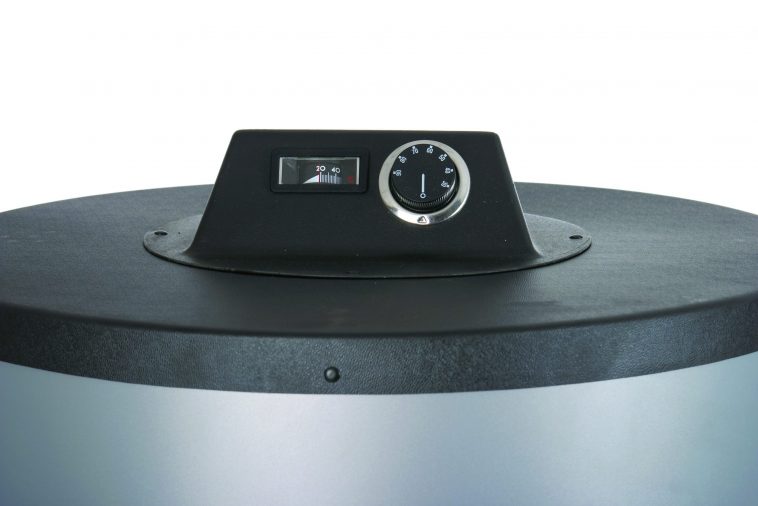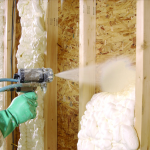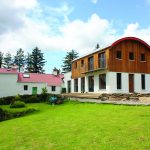Properly designed and installed, a pressurised water system can deliver plenty of water quickly when it’s needed, the critical and primary requirement in any household. These systems are rapidly becoming standard specification for many self-builders.
Domestic pressurised water systems are divided into two types depending on where the pressurised water comes from. This can be directly from the mains supply or via a storage tank and pressurised by a pump.
Mains fed
Mains fed systems have many benefits. They have no need for a pump and so are simpler, cheaper, easier to maintain and virtually silent. Neither do they need a storage tank.
On the down side, they are not permitted in many areas and they provide no reserve in the event of the mains water supply being cut off. Assuming you’re happy with those conditions, a check must be made to establish if the mains water supply is suitable. Unfortunately, it is not sufficient that the pressure is acceptable, you must also have a sufficient flow; there’s a big difference between the two! It’s no good installing a trendy mains-fed system only to find that if more than one tap is turned on in the house, the result is a trickle.
Opting for the mains fed approach means that an unvented hot water cylinder will be needed to cope with the pressurised water supply. These are a good deal more expensive and complex than standard ‘vented’ cylinders and care must be taken to ensure that they are installed safely.
Another way to get more hot water from your system is to use a Combi Boiler. This type of boiler, apart from heating your house, has the added ability to temporarily divert its heating power to heating your hot water as you use it. Typically they are fed their cold water directly from the mains supply and you won’t need to worry about a hot water cylinder with this option as your hot water will be coming directly from the boiler. However, bear in mind that the rate at which the hot water will be delivered to you will depend on the rate at which your boiler can heat it, so careful sizing of the boiler is required. In its early days this was often badly done, with the reputation of the combi suffering accordingly.
Pumped
This system uses a pump to take low pressure water from a storage tank, and is helpful if you have poor water pressure either from the mains or within the house. There are two ways of doing this, depending upon where within your system you position the pump.
The first approach involves a storage tank feeding a standard vented hot water cylinder. A twin ended pump (one end of the pump deals with hot water and the other end with cold), will take its hot water supply from an appropriate location at the cylinder, and the cold from a dedicated feed running directly from the storage tank. Traditionally, pumps used in this situation are located close to the cylinder with the preference being on the floor beside it, but this is not always essential. Look carefully at where the feed from the cylinder is taken as you have to be sure that the pump doesn’t suck in air or deprive other non-pumped outlets of their hot water supply!
The majority of pumps in this category require gravity feed, that is, they won’t suck water from a storage tank situated below their own level. Further, if there are any outlets (showers, taps etc.) located near or above the level of the water in the storage tank, then you will need a ‘negative-head’ pump. This is because a standard (‘positive-head’) pump knows when to turn itself on by detecting the natural gravity flow of water through it. But, if there is a wash hand basin in an attic where the tanks are just resting on the floor, there will be no natural gravity flow through the pump. Negative-head pumps solve this problem.
Another factor to be aware of with this approach is that most pumps don’t like water temperature above 65 degrees. This is not usually a problem in standard immersion and/or oil/gas boiler heated systems as these are easily restricted if required. But it is a concern when your water is heated by an unregulated solid fuel appliance. If that is the case, an appropriate thermostatic mixing valve should be fitted on the inlet to the hot side of the pump. For anyone concerned about scalding, it’s a good idea to fit one of these devices anyway, whatever your system. If you are using an unregulated solid fuel appliance to heat your hot water, you could also investigate the use of a buffer tank arrangement. These will help by saving the excess heat produced so that you can use it in a more controlled fashion at a later time. Some of these tanks can even be used as a general purpose energy bank so that you can lodge the energy generated from solar, solid-fuel, wind-turbine or other sources when it is available, and draw it when you need it.
The other approach with pumped systems is to have a single-ended pump which takes its single feed from a storage tank. The pressurised output is then fed to the cold water outlets around the house and also to an unvented hot water cylinder. Some pumps used for this purpose are capable of sucking water from a source (tank) below their level. However, compared to the generally more compact twin-ended pumps, these pressurisation units are relatively bulky items so lack of space could be an issue.
Other considerations
When selecting a contractor to fit a pressurised system that involves an unvented cylinder, always ensure they are qualified to do the work. Unvented systems contain a lot of hot water under pressure. The failure of, for example, a joint in a pressurised system means a constant outpouring of hot water in the wrong place very quickly.
The handy thing about all of these pressurised systems is that you can have a ‘dry’ loft. So, subject to the selection of an appropriate pump, you can effectively locate the storage tank (if required at all), hot water cylinder and pump anywhere you like. That means more storage space is freed up by the cylinder and, perhaps more importantly to some people, reduced damage from flooding in the event of a failure of the cylinder or attic tank. But before getting too giddy about that extra space in your airing cupboard, do bear in mind that an airing cupboard depends on the heat lost from a traditional cylinder to keep the clothes dry. Often people end up installing electric heaters or even radiators in their airing cupboard after the cylinder was banished. If you do opt for a replacement heat source, remember that radiators attached to your central heating circuit may not be the best idea if you usually turn it off during the summer!
For retrofit situations, the least expensive option is to install a twin ended pump near your existing hot water cylinder. You will still need to have some pipework re-routed depending on your existing layout.
One of the biggest issues encountered with pumped pressurised systems is noise. The pump will probably start every time you turn on a tap or flush a WC. While most of them are extremely quiet (particularly when demonstrated in a busy supplier’s shop), at home, in the middle of the night, any noise from a pump will be unwelcome so make sure you take appropriate steps to minimise it. First of all, make sure you pick a quiet pump and try to locate it as far away as possible from the bedrooms. Don’t forget either that a vibrating pump on a wooden floor is just like beating a drum, so think about resting it on either a solid base or one of the new rubber mats specifically designed for the purpose of absorbing pump vibrations. Steps like screwing the pump down in place, not using flexible pipe connectors and placing it on or near loose floor boards are all guaranteed to emphasise the noise problem.
If it is at all possible, try to keep the feed to WC’s separate from the pump. Service them instead from a separate supply from the mains, attic tank or other source. There are at least two reasons for this. One is that if a WC on a pumped circuit is flushed in the night, the pump will kick in and possibly keep going until the WC cistern has filled. The other is that if you are changing from a normal gravity feed supply to a pressurised one, there is every chance that the ballcock in your WC will not be up to the job. Often this manifests itself by an overflowing cistern because the ballcock hasn’t got the strength to hold back the incoming water, or pumps that shudder as the overstressed ball of the ballcock gets literally bounced on the ripples of the inrushing water, causing the pump to switch on and off rapidly.
With any tank fed system, always bear in mind the capacity of the tank itself. Instead of waiting half a day for your bath to fill up with the old gravity fed system, your new pumped one will probably have it filled in minutes. However, if the capacity of your water tank is insufficient, the pump will be able to drain it a lot faster than your mains can top it up. This might not have been an issue in the past as the supply into the tank would have had a chance to catch up with the outlet. Similarly, on the hot water side, with all that water on hand you’ll probably want to spend even longer under the shower – so check the capacity of the hot water cylinder is up to the job.
But before embarking on a project like this, make sure the fittings and pipework already installed or to be installed will cope with the increased pressures involved. This includes expansion cisterns, WC’s, wash hand basin taps, bath taps and showers, they may be in for a bit of a shock with all this water. Getting rid of this larger amount of water can be problematical too, so if they are at all slow to drain now, get them checked out and rectified.
Which one you select depends on your pocket and the amount of plumbing work you want to do. But the benefits of a properly designed and installed system will become apparent as soon as you take that first shower.







